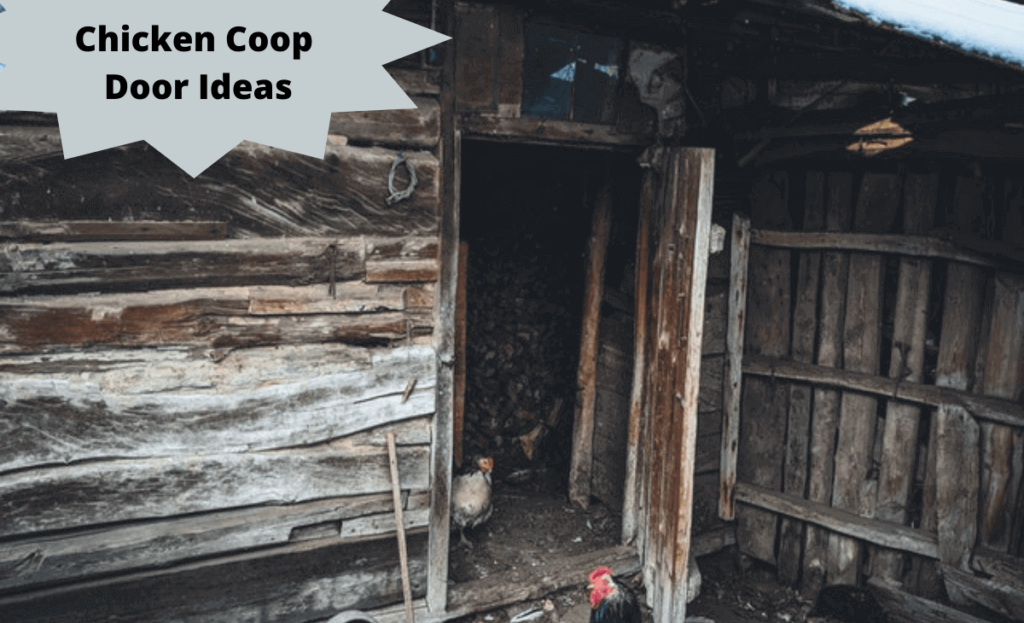It’s hard enough keeping predators out of your poultry run, but what do you do when they’re already inside? Have you thought of any chicken coop door ideas to protect your flock?
One way to protect your chickens is to install pop doors. Pop gates are small gates that automatically open and close, allowing your chickens to come and go as they please while keeping predators out.
Here’s what you need to know about chicken coop pop doors.
How Do Chicken Coop Pop doors Work?
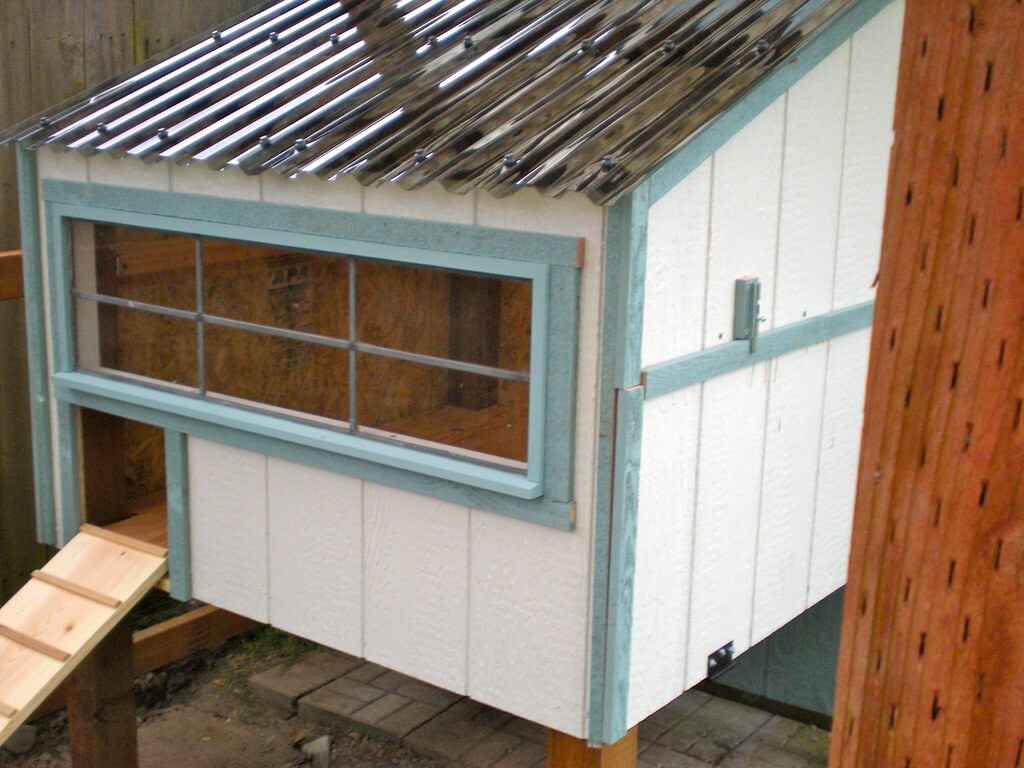
Chicken pop gates usually open and close with a simple mechanism, such as a string or pulley. When the gate opens, your chickens can come and go as they please. When the gate is closed, predators can’t get in.
Advantages and Disadvantages of Chicken Pop Doors
Chicken pop doors provide your chickens with access to the outdoors while keeping a predator out. Second, they can help keep your chicken coop clean by preventing dirt and debris from being tracked inside. Lastly, they can help ventilate the pen, keeping it cool in summer and preventing moisture build-up in winter.
However, they require regular maintenance to ensure that they are working properly. If not installed correctly, it can provide the predator with easy access to the poultry coop. Also, they can be noisy, especially if your flock uses them frequently.
When choosing a pop door, there are a few things to keep in mind:
- Decide whether you want an automatic or manual gate opener.
- Consider the size of the gate. The gate should be big enough for your chickens to get through easily but not so big that a predator can fit through.
- Ensure that the gate fits and is installed correctly, and is well-maintained.
Different Types of Coop Doors: Manual vs Automatic Chicken Coop Door
When it comes to chicken coop pop gates, there are two main types: automatic chicken coop doors and the manual one
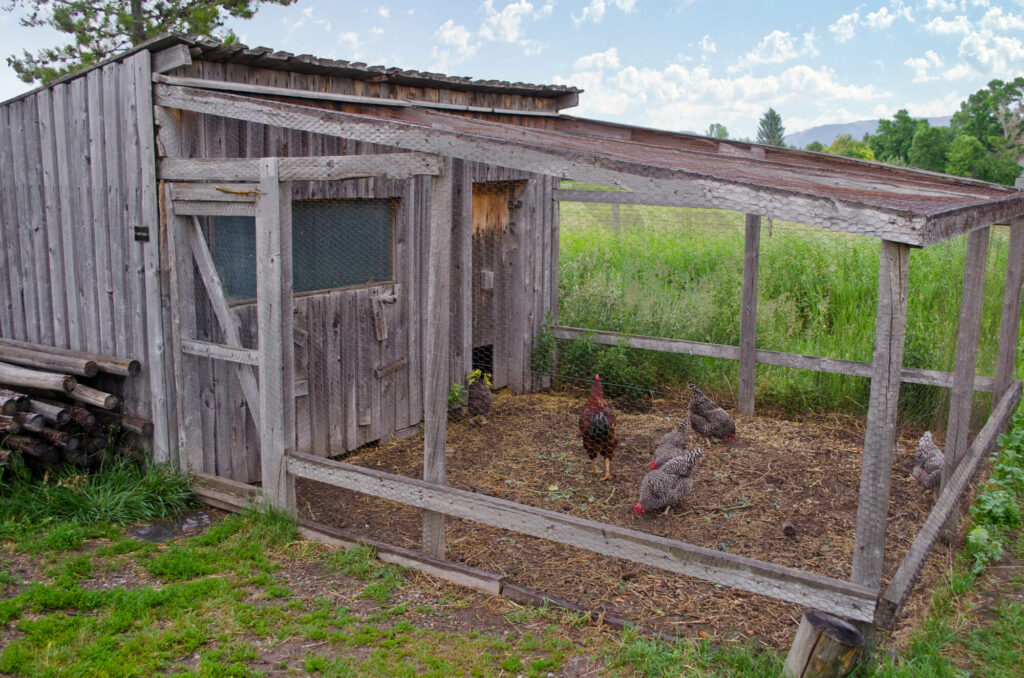
Automatic coop doors work with batteries and use sensors to detect when it is light outside. When the sensor detects light outside, the gate will automatically open. The advantage of this type of gate is that it doesn’t require you to do anything; the gate will open and close on its own. On the contrary, they can be expensive and may need replacement periodically.
On the other hand, manual gate openers are opened and closed by hand. It is less expensive than an automatic door opener. The main disadvantage of a manual gate is that you must remember to open and close it daily.
Manual Chicken Coop Door Ideas
- Pop Door – A pop door is a small gate that opens outward. This type of door is usually made from wood or metal and is hinged at the top. Pop gates are a good option if you want a gate that is easy to open and close.
- Screen Door- This screen door can keep your chickens cool and comfortable during the hot summer seasons, but it’s best if you protect them from predators with sturdy wires. When the cold season starts, you’ll need something to cover up this great little invention.
- Sliding Door– As the name suggests, this gate slides open. It can be made from wood or metal and is usually in barns. A disadvantage of this type of gate is that it requires more space to open and close. There is also the possibility that your chicken could get stuck behind it if installed incorrectly.
- The Double Door– This coop has two doors, an upper and a lower one. The idea is that you can open them separately to let some chickens out if there is any danger around or just for ventilation purposes. It is very simple and one of the manual ones.
- Self-locking Door Latch or Ball Method- If you live in a predator-heavy area, you might want to consider a self-locking gate. A latch on these doors locks automatically when closed, and you can only open them from the inside. You use a ball to close the gate if you don’t have a latch.
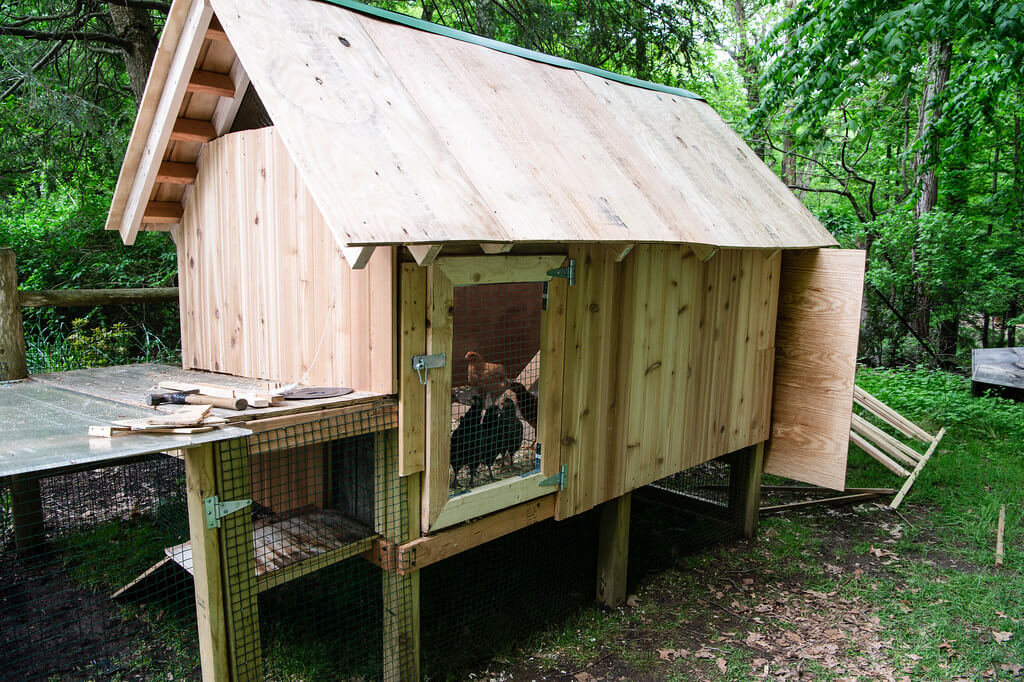
Automatic Chicken Coop Door Ideas
- Automatic Sensor-Activated Door – This type of gate uses sensors to detect when it is light outside. When the sensor detects light outside, the gate will automatically open. The advantage of this type of gate is that it doesn’t require you to do anything; it will open and close on its own. However, this type can be expensive.
- Automatic Pop Door– An automatic chicken door is a gate that is opened and closed by a motor. This type of gate is more expensive than a manual door, but it is convenient because you don’t have to remember to open and close it.
- Timer Door – A timer door is an automatic chicken door that is opened and closed by a timer. This gate type is convenient because you can set it to open and close at specific times.
- Roosting Door- This one is still automatic, but this time instead of using weights to close or open the coop’s entryway, we’ll use their roosts. It might take some trial-and-error until everything works perfectly.
- Chicken Powered Sliding Door – An automatic sliding door powered by the chicken. A chicken stepping on a pressure plate activates this type of gate. The advantage of this type of door is that it is environmentally friendly and doesn’t require batteries. The disadvantage of this type of door is that it can be more difficult to install.
- Magnetic Door– A magnetic door is an opener that is opened and closed by a magnet. This type of gate is convenient because it doesn’t require you to remember to open and close it.
- Swinging Door– This automatic door works best in small chicken coops. It is activated by a string or wire connected to the gate and the coop. When the chicken enters the coop, it will swing behind them.
- Ramp Door- A ramp chicken door is a great option for those who don’t want to bother with opening and closing the gate. Easily open this gate by simply stepping on an edge, which will then rise, allowing easy access into your flock’s home!
- Wifi chicken coop door – A wifi chicken pen door is a gateway that can be controlled with your smartphone or other devices that are connected to the internet. This type of access anywhere, anytime convenience comes with one major drawback -you need an internet connection for it to work.
- Pullet-shut chicken door– A pullet-shut door is a great option for those who want to keep their birds safe and sound. This gate has an inside button that, when pressed opens like any other house window or screen. However, it also closes automatically after opening, which helps protect the chickens from predators exteriorly.
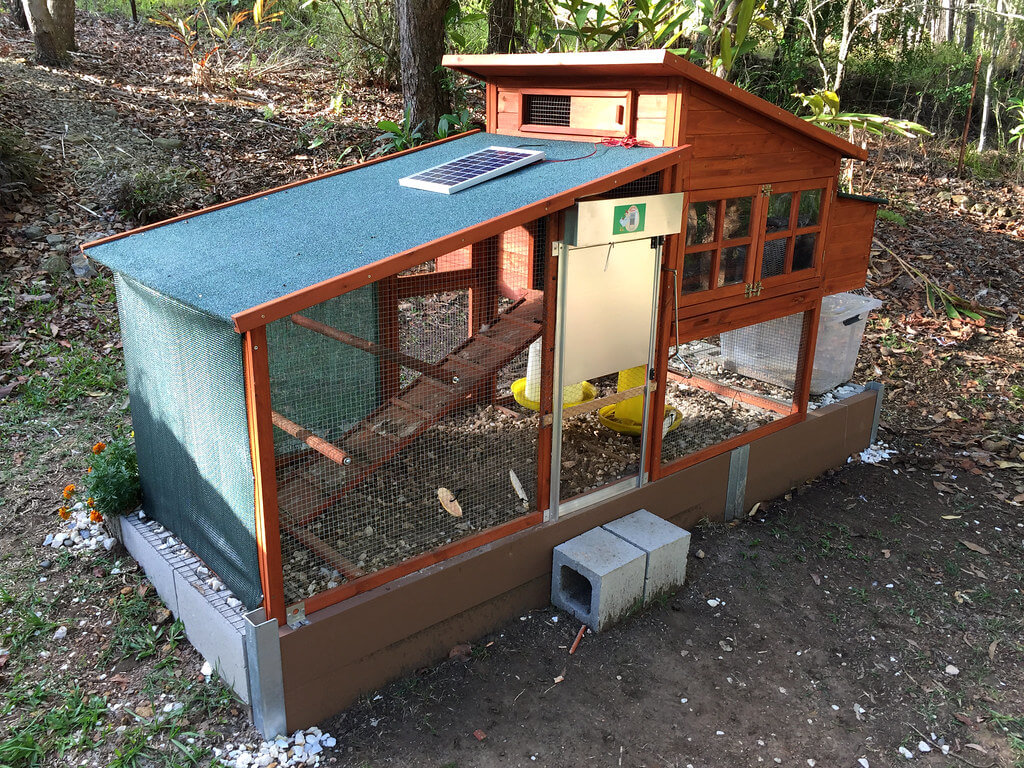
Battery-powered vs. Solar-powered Door for Chicken Coop
There are two main power sources for chicken coop gate openers: battery-powered and solar-powered.
Battery-powered gate openers use batteries to operate. The advantage of this type of opener is that it is less expensive than a solar-powered opener. The disadvantage of a battery-powered opener is that the batteries will need to be replaced periodically.
Solar-powered door openers use solar panels to generate power. It is environmentally friendly and will not require you to replace the batteries. However, acquiring solar panels can be expensive and may not work during a power outage.
Reasons Some Chicken Coops Have Two Doors
-
Providing Shelter from the Elements – One of the main reasons to have two chicken coop doors is to provide shelter from the elements. By having two doors, you can open one gate to let fresh air in while keeping the other gate closed to keep the heat or cold out.
-
Predator Protection – Another reason is to protect your flock from predators. For example, if you have a door that leads to the outside, you can keep it closed at night to protect your chickens from predators. During the day, you can open the door to let the chickens out to roam.
-
Convenience – By having two doors, you can open both gates to let the chickens in and out without having to open and close the gates each time.
-
Protecting the Eggs – Having two gates also protect the eggs. Eggs are the main target of predators, so by having two doors, you can keep one door closed to protect the eggs.
- Manage Disease – Last but not least, having two doors help manage the disease. If a chicken among the flock gets sick, you can close the door leading to the outside to prevent other chickens from getting sick.
Whether for predator protection, convenience, or disease management, having two chicken coop gates can be a great way to keep your chickens safe and healthy.
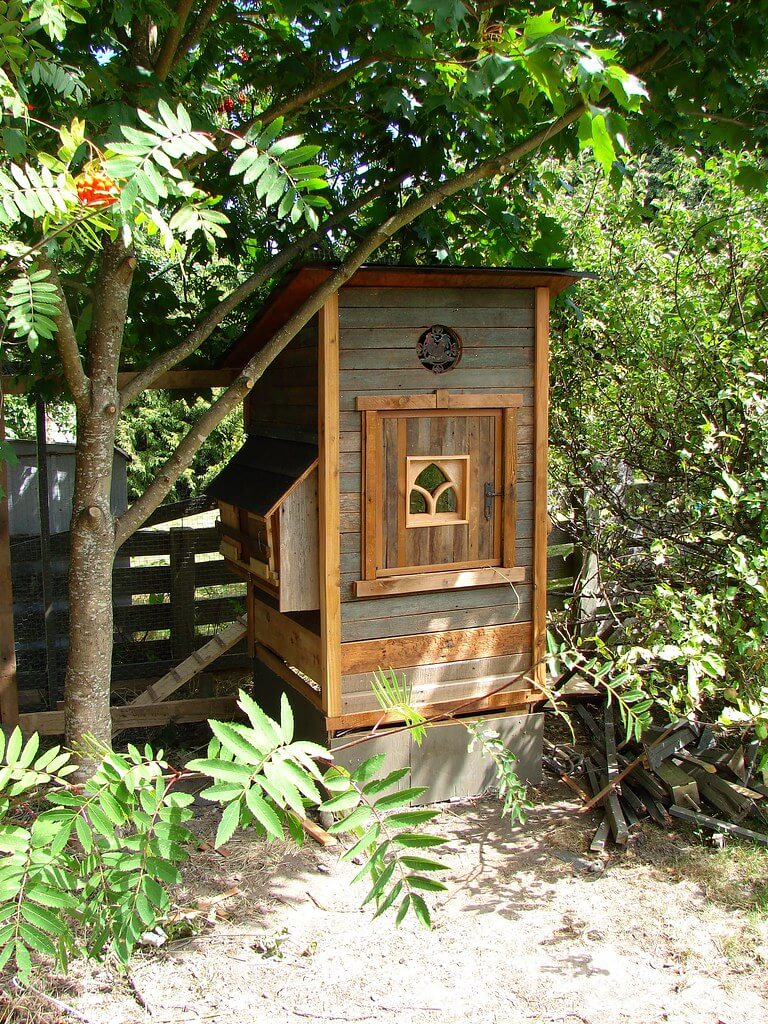
Things to Consider for Your Chicken Coop Doors
Sizes and Height: How Big Should a Chicken Coop gate Be?
The size of your coop door will depend on the size of your poultry coop. A small poultry coop will need a small gate, while a large poultry pen will need a large gate. The height of your coop door will also depend on the size of your pen. A tall poultry coop will need a tall door, while a short poultry run will need a short door.
Material: What Material Should I Use for My Chicken Coop Door?
The material you use for your coop door will depend on your climate. If you live in a cold climate, you will want to use a strong material that will not freeze or crack in the cold weather. If you live in a hot climate, you will want to use a material that will not warp or melt in the heat.
Different chicken breeds need different pop hole sizes to get in and out of the pen. The following table shows the minimum hole size needed for each chicken breed.
Breed Minimum Hole Size of the pop
- Ameraucana 6 inches (15 cm)
- Ancona 5 inches (13 cm)
- Andalusian 7 inches (18 cm)
- Australorp 6 inches (15 cm)
- Barnevelder 6 inches (15 cm)
- Brahma 7 inches (18 cm)
- Buckeye 6 inches (15 cm)
- Orpington 6 inches (15 cm)
- Sussex 6 inches (15 cm)
- Wyandotte 6 inches (15 cm)
As you can see, the minimum hole size needed for each chicken breed varies. Ameraucanas, Anconas, Andalusians, and Australorps need a minimum pop hole size of 6 inches (15 cm). Brahma chicken needs a minimum hole size of 7 inches (18 cm).
Predators: If aerial predators are a threat, consider a larger gate.
If you live in an area where aerial predators are a threat, you may want to consider a larger chicken door. A larger chicken door will make it more difficult for any predator to get into the chicken pen.
Climate: Large chicken gates are good in hot climates and bad in cold climates.
A large chicken door can help keep your chickens cool if you live in a hot climate. However, a large gate can make it difficult to keep your chickens warm if you live in a cold climate.
Types of Latches for Your Chicken Coop Door
Padlock-style with carabiner chicken door latch
This style of door latch is simple and effective. It consists of a padlock that goes through a hole in the gate. A carabiner is then attached to the padlock and hooked onto the coop frame.
Bolt chicken door latch
This gate latch is similar to the padlock-style door latch. It consists of a bolt that goes through a hole in the coop gate. The bolt is then secured with a nut inside the chicken run. This door latch is good for preventing predators from getting into the chicken run.
Self-locking/gravity chicken door latch
This style of door latch is simple and easy to use. It consists of a latch that is attached to the chicken coop door. The latch has a hole in it that the chicken coop frame fits into. When the chicken coop door is closed, the door’s weight will keep the latch in place.
Snap hook and chain chicken door latch
This door latch is similar to the padlock-style chicken door latch. It consists of a snap hook attached to the chicken coop door. A chain is then attached to the snap hook and hooked onto the chicken coop frame.
Building a Sliding Barn Gate
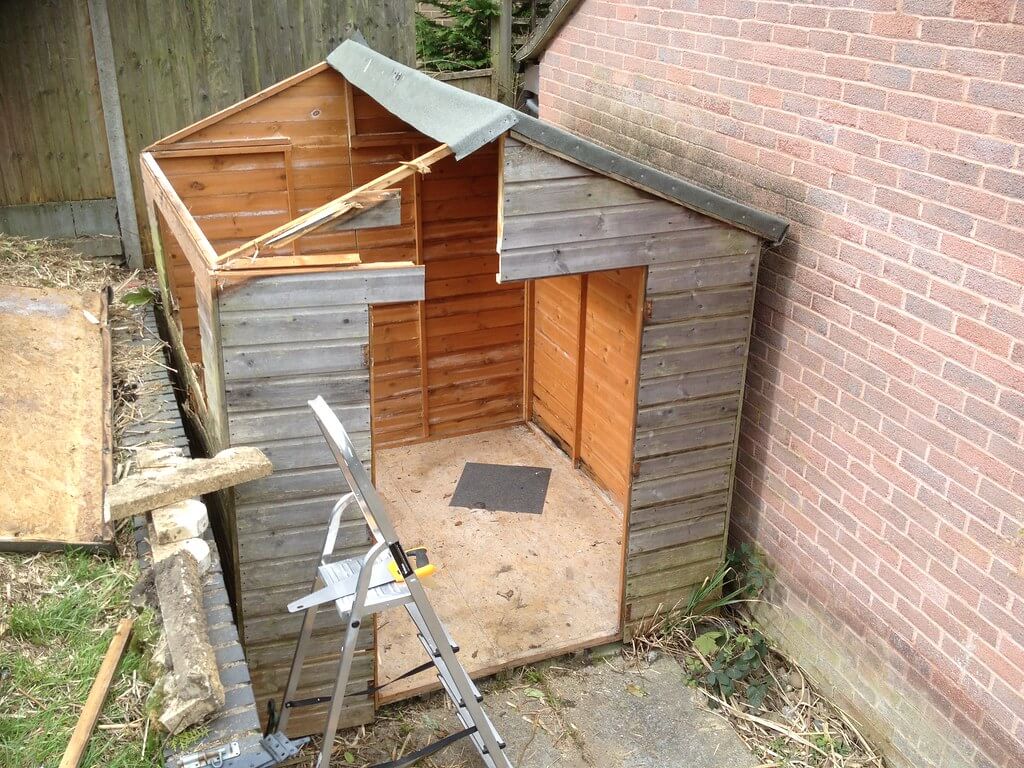
If you’re looking for a more permanent solution, you could build a sliding barn gate. This type of gate is usually made from wood or metal and slides open and closed on a track. The advantage of this type of gate is that it is very durable. You can also open and close it quickly. The disadvantage of a sliding barn gate is that it requires more space to open and close, and it can be more difficult to install.
Building Chicken Runs
Chicken runs are enclosed areas where your poultry can roam and exercise. You can attach chicken runs to chicken coops, or they can be stand-alone structures. Specifically, a chicken run should be:
– Enclosed on all sides with a solid fence
– Made out of weather-resistant material
– At least 3 feet (1 meter) tall
– Have a roof to protect the poultry from a predator
– Have a door to allow the flock in and out of the run
– Be large enough for the poultry to move around freely
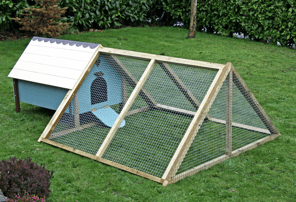
Would Building Your Own Chicken Coop Door Save You Money?
Building your chicken coop door can save you money. You will not have to purchase a chicken coop door from a store. You can also build your own chicken coop door to specific specifications. It can be helpful if you need a chicken coop door that is a certain size or has certain features. Moreover, building your own chicken coop door can be a fun and rewarding project.
DIY automatic door is also a good option to save money. But manual gate openers are easier to make as compared to automatic doors.
Disadvantages of Building Your Own Chicken Coop Door?
Building your own chicken coop door can be time-consuming. If you don’t have experience in carpentry, it may take you longer to build your chicken coop door. Moreover, if you make a mistake while building your chicken coop door, it can be costly to fix.
If you decide to build your own chicken coop door, you should keep a few things in mind.
- You will need to have some experience in carpentry.
- It is important to measure the opening of your chicken coop door carefully.
- You will need to purchase the correct supplies.
- Allow yourself enough time to build the chicken coop door.
- Have patience while building your chicken coop door.
Final Thoughts: Chicken Coop Door Ideas
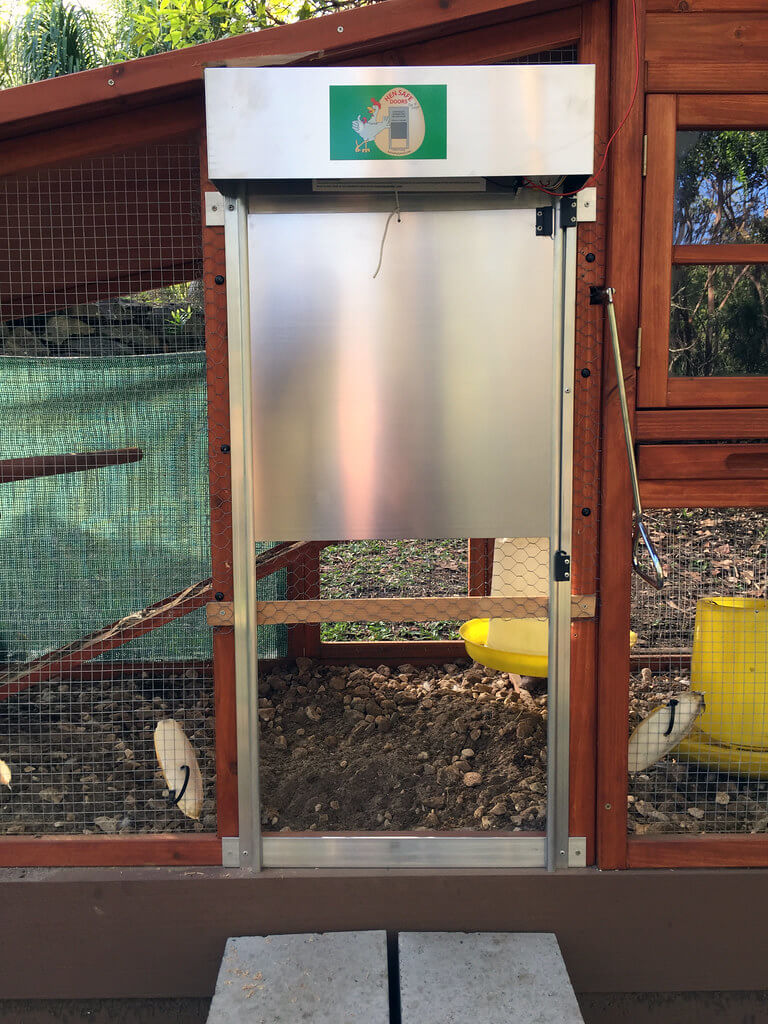
A chicken coop door is a vital part of any chicken run. Chicken doors allow poultry to enter and exit the chicken pen. They also help to keep the predator out. These chicken coop door ideas will help you select a suitable gate for your poultry run. Now that you know more about chicken coop gates, you can decide if building your own chicken coop door is the right choice for you.
FAQ’s Chicken coop door ideas
Can your poultry fowl stay in the pen all day?
No, your fowl needs free range for at least part of the day. Free-ranging allows your flock to forage for food and exercise.
How often should I let my hens out of the pen?
Hens should be let out of the pen every day. The time they should be free-ranged will depend on the weather and the predator threat in your area.
When should you close your chicken coop door?
The chicken coop door should be closed at night to protect your hens from a predator. The door can also be closed during the day if there is a predator threat in your area.
Can I Leave My Chicken Coop Door Open Overnight?
No, you should not leave your chicken coop door open overnight. Chickens are vulnerable to predators at night, and the door should be closed to protect them.

